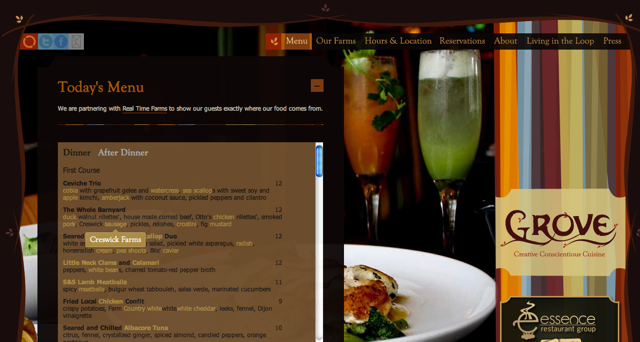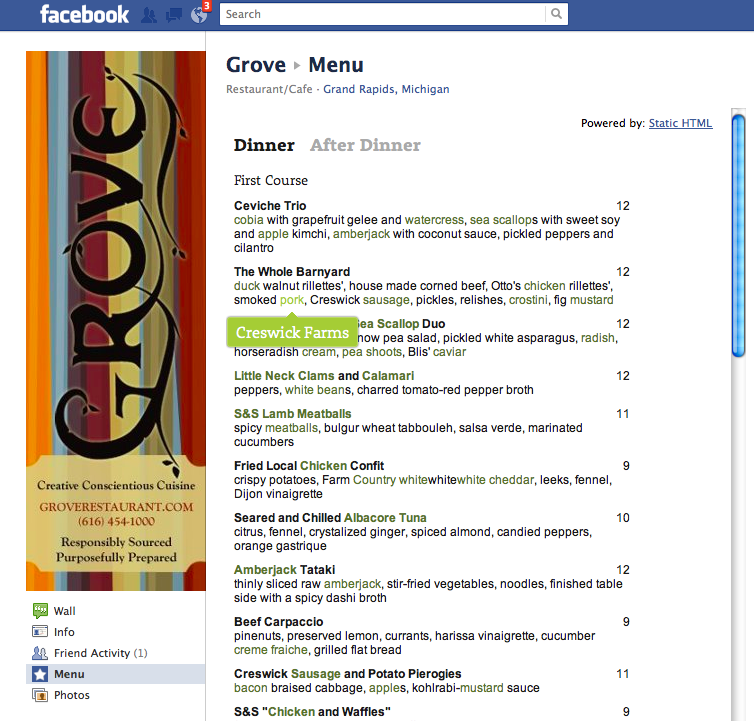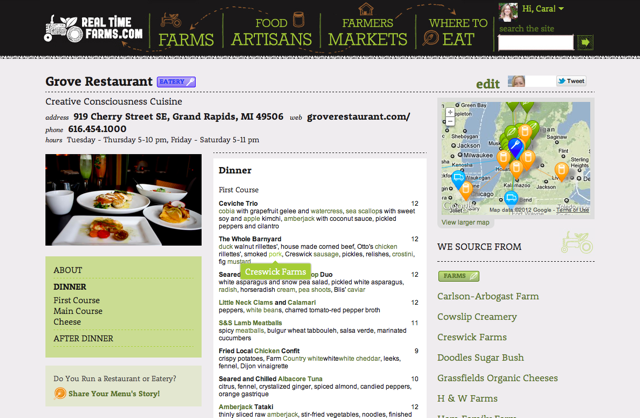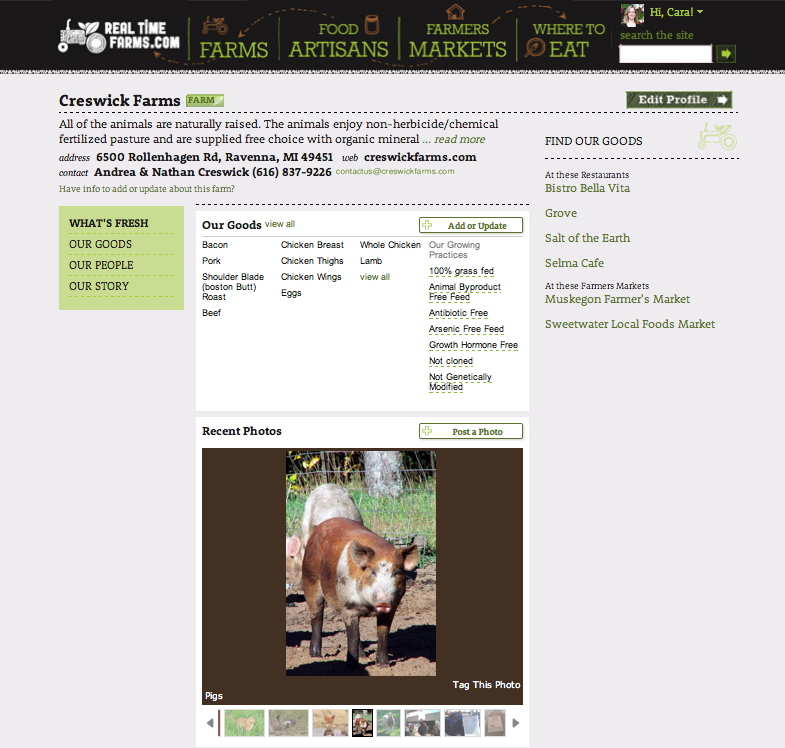
Co-written with Lindsay-Jean Hard and Corinna Borden
I made a big mistake awhile ago. (True story.)
My dad called me up, really excited about a deal he got on ribs at the superstore, and invited my husband, my sister, and I over for dinner. Nice, right? Instead of a polite yes or no, I completely failed to repress the urge to enlighten my father as to why he should never buy super-sale ribs at the superstore again.
"But Dad, those pigs are given antibiotics, and growth hormones, and the meat is artificially cheap because of subsidies in the feed, and the waste builds up, and it can't be emptied into the environment effectively, so it ends up in our water systems, and...." when I finally came up for a breath, there was silence on the phone.
"Okay, good to know," my dad says, "so do you still want to come to dinner?"
I tell you this story, not just to completely embarrass myself, but because I think it's a good lesson for a couple of reasons. First of all, I want to help change the way people eat, but I'm not going to accomplish that by shaming them. Changing the way people eat can only happen by engaging people in a non-judgmental, fun, and meaningful way. Also, it clearly illustrates one of the biggest problems facing our food system to date -- lack of transparency.
We assume our food system has somehow taken care of itself. The aisles of perfectly aligned boxes, and perfectly stacked produce reflect a food system where a tomato is a tomato is a tomato, or an egg is an egg is an egg. Food is a commodity and it's all the same.
But it's not.
Eggs come from chickens eating many different things, from grass and grubs to feed with antibiotics and arsenic, and raised in different ways, from pecking on pastures to packed into indoor cages with tight quarters. Regardless of our buying preferences, I think we can all agree we have a right to the information from an unbiased source.
That's what my husband, Karl Rosaen, former senior engineer for Google's Android, and our team set out to do with Real Time Farms. Given the opaqueness of our food system and our confusion with labels, we wondered if it was possible to always trace your food back to the farm. By knowing the farm, you would know the food. Rather than being prescriptive, we could simply give consumers the complete picture, so they could decide for themselves.
Of course documenting the entire food system is no small goal. That's over two million farms in the United States alone, along with every food artisan, fisherman, distributor, retail location, restaurant, farmers market, food co-op, grocery store... Plus we want to document all of these components in a meaningful way; with pictures, growing practices, video, seasonality, and more.
Clearly we can't accomplish this alone, and we wouldn't want to. Like Wikipedia, everyone can contribute to the data. We are creating a voice for farmers and eaters alike. As you are reading this, people are taking and posting pictures from their farmers market or from their trip to the orchard with their family. They are telling us if the cows are grass-fed, if the chickens are in the pasture, or if there are GMOs in the feed. We are uncovering the information that was previously hidden -- together.
Cooking tonight? Want to find ingredients you feel good about? Soon, you'll be able to search Real Time Farms and find food based on your own preferences: grass-fed beef or tomatoes grown using only organically approved pesticides and fertilizers.
Driving by a sign on my local I-94 recently, I saw a McDonald's ad saying "We serve Michigan eggs." As we are increasingly bombarded with "local," "sustainable" and other ambiguous terms, we need a way as consumers to know what this really means and hold the system accountable.
Eating out? We created software for restaurants to use to trace every ingredient back to a farm. These tools answer diners' questions before sitting down: "what do you mean by 'local' or 'sustainable'?", "is this antibiotic-free meat?", "what pesticides, if any, were used to grow this tomato?" The National Restaurant Association's most recent survey of 1800 chefs found that local sourcing was the top trend for 2012.
This software enables eateries across the world to plug into the publicly-generated guide of farms and artisans, and share the story of their food with an interactive, farm-linked menu on the restaurant's website (example).

Grove in Grand Rapids using Real Time Farms software to tell the story of their food on their own website.
 Interactive menu powered by Real Time Farms on Grove's Facebook page.
Interactive menu powered by Real Time Farms on Grove's Facebook page.
on Real Time Farms (example).
 Grove's interactive menu on Real Time Farms.
Grove's interactive menu on Real Time Farms.
 On their website, on their Facebook page, and on Real Time Farms you can learn about Creswick pork, by hovering over pork on the menu, and being taken to images, stories, and growing practices on how Andrea and Nathan Creswick raise their heritage pigs on RealTimeFarms.com.
On their website, on their Facebook page, and on Real Time Farms you can learn about Creswick pork, by hovering over pork on the menu, and being taken to images, stories, and growing practices on how Andrea and Nathan Creswick raise their heritage pigs on RealTimeFarms.com.
Since launch of the software in May 2011, seventy-eight restaurants across the country from neighborhood hot-spot Monica Downen's Monica's Waterfront Bakery & Cafe in Silverdale, Wash., Tom Gray's Bistro Aix in Jacksonville, Fla., Stephanie Izard's Girl & The Goat in Chicago, Ill., to Ris Lacoste's RIS in Washington, D.C., have adopted the software.
Imagine if you knew where the food came from at your child's school, at every workplace cafeteria, at every nursing home, and at every hospital. That means partnering with big distributors, so when they ship chicken to your child's school, we are pinged, and our system automatically displays to you, the consumer, where the chicken comes from, and you can virtually explore the farm (or farms).
One of the first chefs we ever worked with, Brandon Johns of Ann Arbor's Grange Kitchen & Bar, said to me, "We spend so much time researching a TV, but we'll go and buy a chicken anywhere."
It's so true. This is crazy, right? If we took time to research anything, it seems it would be worth researching arguably the one thing (above all else) that could have the single largest impact on our health, on the health of the environment, and let's face it, basic human enjoyment -- food.
I think we can change our food system simply by giving people access the information. Without food transparency, we truly have no choice.